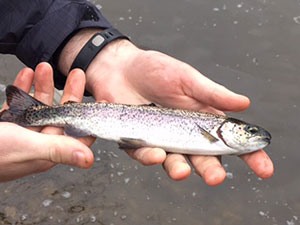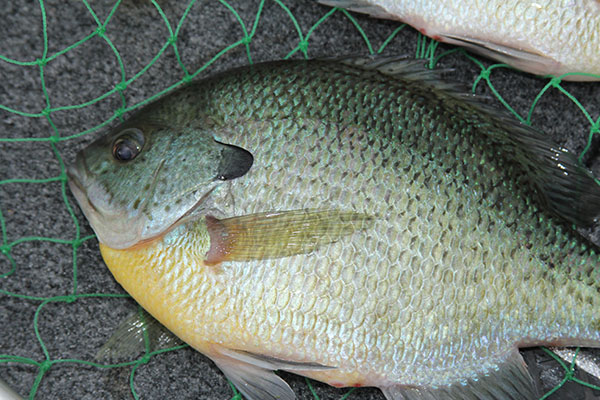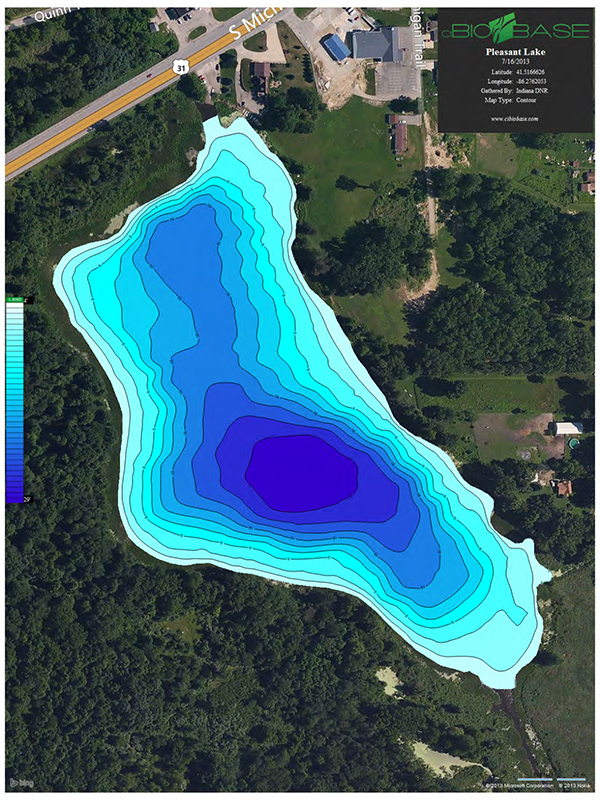- Details
By Louie Stout
 Indiana’s St. Joe Steelhead Run Continues to ImpressBrian Breidert is a happy biologist.
Indiana’s St. Joe Steelhead Run Continues to ImpressBrian Breidert is a happy biologist.
And if you’re an Indiana steelhead angler, you should be, too.
Briedert was gushing lastweek as he discussed the spring steelhead run, one that has delivered a steady stream of bulldogging fish into Indiana waters all the way to the Twin Branch Dam.
And it ain’t over.
- Details
By Louie Stout
 Mild Winter May Deliver Good Summer Fishing
Mild Winter May Deliver Good Summer Fishing
Most anglers know that the weather plays a huge role in fish activity and angler success. Cold fronts can shut down a hot bite while an imminent thunderstorm can turn it on.
But what about our mild and goofy winter? Could it affect fishing this spring and summer?
Indiana fisheries biologist Jed Pearson thinks there’s a good chance it could yield a good spring and summer fishing season.
Pearson is a fish researcher who has been studying winters’ impacts on northern Indiana lakes.
“When we look at what’s happened on a handful of lakes we’ve studied, we’ve found that more and better habitat is present when overall winter and spring conditions are warmer and drier than during those seasons that follow colder, wetter years,” he explained.
When he speaks of habitat, he’s talking about water temperature and oxygen levels that affect the space in which fish can live comfortably.
- Details
By Louie Stout
 Study Reveals St. Joe Bass, Walleye Movements
Study Reveals St. Joe Bass, Walleye Movements
River smallmouth are home bodies.
That is a bit contradictory given the common belief that smallmouth bass are nomadic. That may be the case in lakes, but not necessarily in the St. Joseph River.
At least that’s what Dar Deegan, aquatic biologist for Elkhart and St. Joseph counties, has been discovering in his analysis of an ongoing tagging study his office has conducted since 1998.
Deegan spends his time monitoring water quality and the health of fish life in St. Joe and its tributaries. While conducting on-the-water research, he collects some gamefish with electro-shocking methods and records growth data and their overall health condition.
River researchers have placed tiny tags in the backs of smallmouth, walleyes and a few largemouth that measure 12 inches or bigger before the fish are released.
The tags have small print that alerts anglers to contact him when they catch the tagged fish. Each fish carries an identification number. The Michiana Walleye Association has helped finance the project through a donation.
Over the years, Deegan has tagged 4,000 smallmouth, 900 walleyes and 100 largemouth.
- Details
By Louie Stout
 New Lake Maps Will Help Indiana Anglers
New Lake Maps Will Help Indiana Anglers
Lake contour maps have long been one of the most valuable tools fishermen can use to find potentially productive areas.
Those topographic maps will show you instantly where the big flats lie, where the lake bottom plunges into the abyss, and fish holding structures like underwater points and submerged islands.
Game fish use bottom contours as highways to and from feeding or comfort areas. Often times they will school on an irregular feature, such as a point, an inside turn of a drop-off, or on offshore humps. If you have knowledge of the seasonal patterns of each fish species, map study can lead you to those most productive areas.
